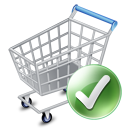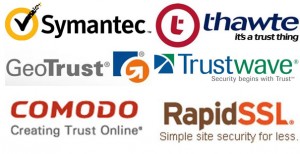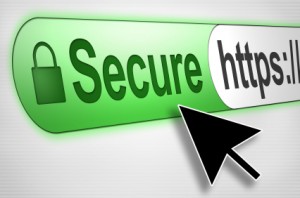TheSSLStore’s Top 5 Suggestions to Defeating Hackers in the New Year
As 2012 begins, now more than ever SMBs need to ensure their web pages are ready to appeal to internet users while also keeping them safe. To help smaller companies prepare their web pages for the year ahead, The SSL Store has prepared its “Top 5 Tips for 2012” smaller companies should follow to make sure no data is compromised throughout the New Year.
- Use an SSL Certificate to secure all internet orders and related information
- Display a recognized third-party assurance mark as clearly as possible
- Update to EV SSL so clients will see the green bar (their browser cue that an internet site is safe)
- Prevent spyware infections and blacklisting from Google with automatic spyware tests and weakness assessments
- Prevent destructive marketing (malvertising) by consistently tracking third-party code, links and advertising
 The growing rate and severity of cyber problems places internet details and orders increasingly at risk. Security is available to provide user details protection, but unfortunately, many businesses don’t provide end-to-end encryption when sending private details of people using their web pages. To better secure themselves and their clients, SMBs should apply Secure Sockets Layer (SSL), also known as Hypertext Transfer Protocol Secure (HTTPS), to all web pages seeking susceptible personal or financial details, such as signup and login pages for business and banking. The technology is simple and inexpensive; it can be purchased through various online sources, The SSL Store being one example.
The growing rate and severity of cyber problems places internet details and orders increasingly at risk. Security is available to provide user details protection, but unfortunately, many businesses don’t provide end-to-end encryption when sending private details of people using their web pages. To better secure themselves and their clients, SMBs should apply Secure Sockets Layer (SSL), also known as Hypertext Transfer Protocol Secure (HTTPS), to all web pages seeking susceptible personal or financial details, such as signup and login pages for business and banking. The technology is simple and inexpensive; it can be purchased through various online sources, The SSL Store being one example.

Consumers do not always know who is behind an internet site they are visiting and need confirmation that it is run by a genuine business. This is especially true for SMBs, which often lack the widespread brand acceptance of a reliable business. Trust seals and assurance marks from well known third parties are important ways for SMBs to show their reliability and improve guest assurance, traffic and orders. In March 2011 – just after the winter 2010/2011 season – a U.S. Online Customer Study found that 94% of participants were likely to continue an on the internet purchase when they viewed the Norton™ Seal during checkout, more than any other seal viewed. Moreover, SMBs should look for seals that are not just fixed pictures (which are often inauthentic), but dynamically link to real-time information proving that the company bought the seal and which Document Specialist (CA) provided it. VeriSign will be transitioning to Norton Secured in April at the server level, so that seal could now be ordered as VeriSign (as a standalone or free with any VeriSign SSL), awaiting the April transition.
 Cybercrime is becoming more advanced and sophisticated every day, making it extremely hard to determine whether or not an internet site is legitimate. Social technological innovation and research tells us that it is extremely hard to tell apart actual messages, web links, and web pages from bogus ones just by looking at them. Valuable tools to reduce cybercriminal offenses are Extended Acceptance Secure Plug Part Accreditations (EV SSL) for all web pages using SSL. In fact, the Online Trust Partnership (OTA) 2011 Online Safety Honors Roll and Scorecard revealed a 68 % year-to-year increase in the adoption of EV SSL. EV SSL turns the address bar green in the major browsers, showing that the Web site (and, by expansion, the organization behind it) are genuine. This graphic cue provides immediate confirmation and improves consumer assurance.
Cybercrime is becoming more advanced and sophisticated every day, making it extremely hard to determine whether or not an internet site is legitimate. Social technological innovation and research tells us that it is extremely hard to tell apart actual messages, web links, and web pages from bogus ones just by looking at them. Valuable tools to reduce cybercriminal offenses are Extended Acceptance Secure Plug Part Accreditations (EV SSL) for all web pages using SSL. In fact, the Online Trust Partnership (OTA) 2011 Online Safety Honors Roll and Scorecard revealed a 68 % year-to-year increase in the adoption of EV SSL. EV SSL turns the address bar green in the major browsers, showing that the Web site (and, by expansion, the organization behind it) are genuine. This graphic cue provides immediate confirmation and improves consumer assurance.
 Both windows and Google require internet marketers to prove their web pages are not attacked with spyware. To secure their users, Google and windows blacklist attacked web pages, banner them and advise all guests that the web pages may harm their computers. The threat of blacklisting presents a huge trouble for attacked web pages, hurting the site’s awareness, status and SERPS, even if the internet marketers fix the problem quickly. To help reduce this weakness, VeriSign offers the “VeriSign Vulnerability Assessment” to help you not only identify quickly, but also allows take action against the exploitable weaknesses that it finds on your website. These cloud-based solutions help guarantee internet marketers and guests that you are clear of potential cybercriminal attacks.
Both windows and Google require internet marketers to prove their web pages are not attacked with spyware. To secure their users, Google and windows blacklist attacked web pages, banner them and advise all guests that the web pages may harm their computers. The threat of blacklisting presents a huge trouble for attacked web pages, hurting the site’s awareness, status and SERPS, even if the internet marketers fix the problem quickly. To help reduce this weakness, VeriSign offers the “VeriSign Vulnerability Assessment” to help you not only identify quickly, but also allows take action against the exploitable weaknesses that it finds on your website. These cloud-based solutions help guarantee internet marketers and guests that you are clear of potential cybercriminal attacks.
 A site’s success depends on guests trusting that the website links and marketing advertising feel safe. Cybercriminals know this and have used malvertising to take advantage of that assurance. Malvertising takes three primary forms: cyber thieves crack into web pages and install spyware into marketing ads; internet marketers unintentionally deliver spyware after cyber thieves give up their networks; and cyber thieves position themselves as genuine companies and wait for people to click on their ads. Website entrepreneurs can have tremendous difficulty discovering malvertising problems and an even harder time finding and arresting criminals. To reduce these dangers, SMBs should invest in solutions that search within, diagnose and report malvertising on their web pages. These solutions also immediately inform marketers and identify the location of destructive marketing so clients can remove destructive ads that may damage their company’s status.
A site’s success depends on guests trusting that the website links and marketing advertising feel safe. Cybercriminals know this and have used malvertising to take advantage of that assurance. Malvertising takes three primary forms: cyber thieves crack into web pages and install spyware into marketing ads; internet marketers unintentionally deliver spyware after cyber thieves give up their networks; and cyber thieves position themselves as genuine companies and wait for people to click on their ads. Website entrepreneurs can have tremendous difficulty discovering malvertising problems and an even harder time finding and arresting criminals. To reduce these dangers, SMBs should invest in solutions that search within, diagnose and report malvertising on their web pages. These solutions also immediately inform marketers and identify the location of destructive marketing so clients can remove destructive ads that may damage their company’s status.
To guarantee that their clients can rely on their internet site to be secure, smaller companies with an internet presence should adhere to these best methods. Doing so will guarantee their consumers’ experience is a simple and enjoyable one. Happy internet shopping in the New Year!






































![A Look at 30 Key Cyber Crime Statistics [2023 Data Update]](https://www.thesslstore.com/blog/wp-content/uploads/2022/02/cyber-crime-statistics-feature2-75x94.jpg)










5 Ways to Determine if a Website is Fake, Fraudulent, or a Scam – 2018
in Hashing Out Cyber SecurityHow to Fix ‘ERR_SSL_PROTOCOL_ERROR’ on Google Chrome
in Everything EncryptionRe-Hashed: How to Fix SSL Connection Errors on Android Phones
in Everything EncryptionCloud Security: 5 Serious Emerging Cloud Computing Threats to Avoid
in ssl certificatesThis is what happens when your SSL certificate expires
in Everything EncryptionRe-Hashed: Troubleshoot Firefox’s “Performing TLS Handshake” Message
in Hashing Out Cyber SecurityReport it Right: AMCA got hacked – Not Quest and LabCorp
in Hashing Out Cyber SecurityRe-Hashed: How to clear HSTS settings in Chrome and Firefox
in Everything EncryptionRe-Hashed: The Difference Between SHA-1, SHA-2 and SHA-256 Hash Algorithms
in Everything EncryptionThe Difference Between Root Certificates and Intermediate Certificates
in Everything EncryptionThe difference between Encryption, Hashing and Salting
in Everything EncryptionRe-Hashed: How To Disable Firefox Insecure Password Warnings
in Hashing Out Cyber SecurityCipher Suites: Ciphers, Algorithms and Negotiating Security Settings
in Everything EncryptionThe Ultimate Hacker Movies List for December 2020
in Hashing Out Cyber Security Monthly DigestAnatomy of a Scam: Work from home for Amazon
in Hashing Out Cyber SecurityThe Top 9 Cyber Security Threats That Will Ruin Your Day
in Hashing Out Cyber SecurityHow strong is 256-bit Encryption?
in Everything EncryptionRe-Hashed: How to Trust Manually Installed Root Certificates in iOS 10.3
in Everything EncryptionHow to View SSL Certificate Details in Chrome 56
in Industry LowdownPayPal Phishing Certificates Far More Prevalent Than Previously Thought
in Industry Lowdown